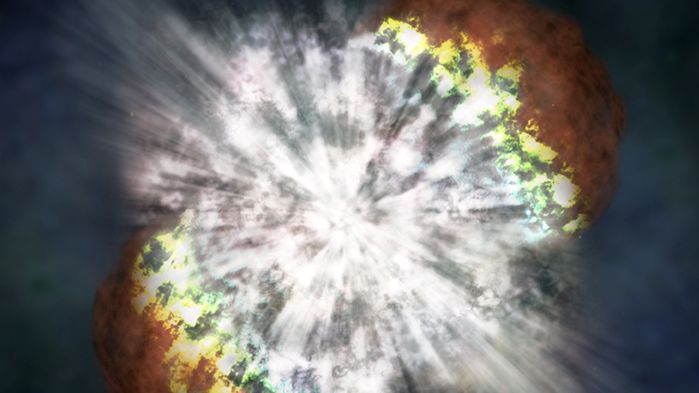Next supernova may help explain dark matter

For almost a century, the scientific community has tried to decipher one of the greatest mysteries of space: character dark matter. Although it makes up approximately 85% of the matter in the universe, it practically invisible for telescopes. Its existence can only be judged by its gravitational influence. However study of the nearest supernova may shed some light, according to research by astrophysicists at the University of California, Berkeley.
Axion, key ingredient
The most promising candidate in the search for dark matter is axiona light particle that astronomers around the world are looking for. In a paper published in the journal Physical Review Letters, the researchers describe a scenario in which axions can be discovered almost immediately after a supernova explosion close. When a massive star collapses to form a neutron star, its hot interior generates large numbers of axions. They will quickly run away, and when interacting with intense magnetic field from a neutron star they will turn into high-energy gamma rays.
The QCD axion, which takes its name from the theory of quantum chromodynamics (QCD), This is a hypothetical particlethat is, its existence has been theoretically postulated but not yet experimentally confirmed. One of its most mysterious properties is its extremely weak interaction with matter. Unlike other particles, the QCD axion experiences almost no fundamental forces other than gravity. This function makes it extremely difficult to detectsince it does not interact easily with ordinary matter.
However, in a strong magnetic fieldan axion can sometimes turn into electromagnetic wave or photon. This distinguishes it from other light particles such as neutrinos, which do not interact with electromagnetism. Astrophysicists understand that neutron stars They function as ideal laboratories for searching for axions because they are extremely hot and have strongest magnetic fields in the universemaking them a suitable environment to become detectable signals.
Missed opportunity
“If we saw a supernova like 1987A with a modern gamma-ray telescope, we will be able to detect or rule out this QCD axion,” explains Benjamin Safdie, assistant professor of physics at the University of California, Berkeley and lead author of the study, citing last nearest supernova. This happened almost forty years ago in Large Magellanic Cloud, one of the satellites of the Milky Way.
He telescope which pointed in his direction, no longer active, still I wasn’t sensitive enough. to detect the intensity of gamma rays. Thanks to modern technology, its observation would allow confirm or exclude the existence of this particle and we know many of its properties, both those that are difficult to study in the laboratory and those that can be studied under controlled conditions.
Detection will allow cover a wide range of possible masses for the QCD axion. They are currently developing a lot of experiments on Earth that are trying to detect these particles, but each one is designed to search for axions inside specific mass range. In parallel, if these gamma rays are not detected, a large number of possible masses could be ruled out, meaning that many of the current experiments are searching in a range where the QCD axion likely does not exist. “And everything would happen in 10 seconds,” says the expert.
However, this scenario depends on several critical factors. First, a supernova must occur in the region relatively closeinside our galaxy or its neighboring satellites. In addition, the Fermi Gamma-ray Space Telescope, the only instrument in orbit capable of observing this phenomenon, will need to point in the right direction. Given the limited scope of the telescope, current chances of success They barely 10%.
GALAXIS: offer to come prepared
For Safdie and his colleagues, the opportunity miss another opportunity events like those of 1987 would be devastating. “It would be a real shame that tomorrow a supernova will explode and we will lose the opportunity to detect the axion; “I may not come back for 50 years.”– he complains.
Faced with this fear, scientists they cooperate with other colleagues to explore the possibility of launching Gamma-ray telescope network in an orbit that will cover the sky 24 hours a day, 7 days a week. Named as GALAXY (GALactic AXion for supernovae), this system will provide detection gamma rays generated by axions, if they exist.
His technical difficulty This is a serious problem, but researchers say it has great scientific potential. “I think we are all in this article emphasized for the possibility of the next supernova occurring before we get proper equipment“Safdie says.
